- Hair Products & Cosmetics
- 0 likes
- 418 views
- 0 comments
Choosing the right shampoo and conditioner is crucial for maintaining healthy hair, and it’s often more important than people realise. We all want hair that looks vibrant, feels smooth, and stays strong, but achieving that starts with what we’re using to clean it.
Your hair has unique needs based on its type, texture, and even the environment you live in. Using the wrong products can lead to a whole range of issues, from dryness and breakage to oiliness and frizz. This is why it’s so important to take the time to understand which shampoo and conditioner will work best for you. In this blog, we’re going to walk you through how to make the right choices to keep your hair looking and feeling its best.
How To Choose The Right Shampoo?
So, how do you actually choose the right shampoo? It’s not as simple as just grabbing the first bottle you see or picking one based on how great it smells. Finding the right shampoo means understanding your hair’s specific needs, and that starts with recognising the unique characteristics of your hair and scalp. Whether your hair is curly, straight, thick, or fine, or whether your scalp tends to be dry or oily, all of these factors play a crucial role in deciding what will work best for you.
Consider Your Hair Type
Understanding your hair type should be a journey towards discovering what makes your hair uniquely yours. Whether your hair flows straight, falls into gentle waves, forms defined curls, or coils tightly in kinky spirals, each type requires a thoughtful approach to its care.
Straight Hair
For those with straight hair, the journey often begins with embracing its natural shine and smoothness. Straight hair has a sleekness that allows it to reflect light effortlessly, giving it a glossy, polished appearance that can be both a blessing and a challenge. This type of hair, while easy to manage, can quickly become oily because the natural oils from your scalp travel unimpeded down each strand. To maintain the delicate balance between shine and oiliness, it's essential to choose a shampoo that cleanses deeply yet gently, ensuring your hair remains fresh and voluminous without stripping it of its natural lustre.
Wavy Hair
Wavy hair, with its natural S-shaped pattern, often feels like the middle ground between straight and curly, offering the best of both worlds. This type of hair can evoke a sense of effortless beauty, with waves that suggest movement and texture, yet it can also be prone to frizz, especially in humid environments. The key to caring for wavy hair lies in finding that sweet spot where moisture meets control. A shampoo that hydrates without overwhelming the natural wave is ideal, helping to enhance the texture while taming any unruly strands.
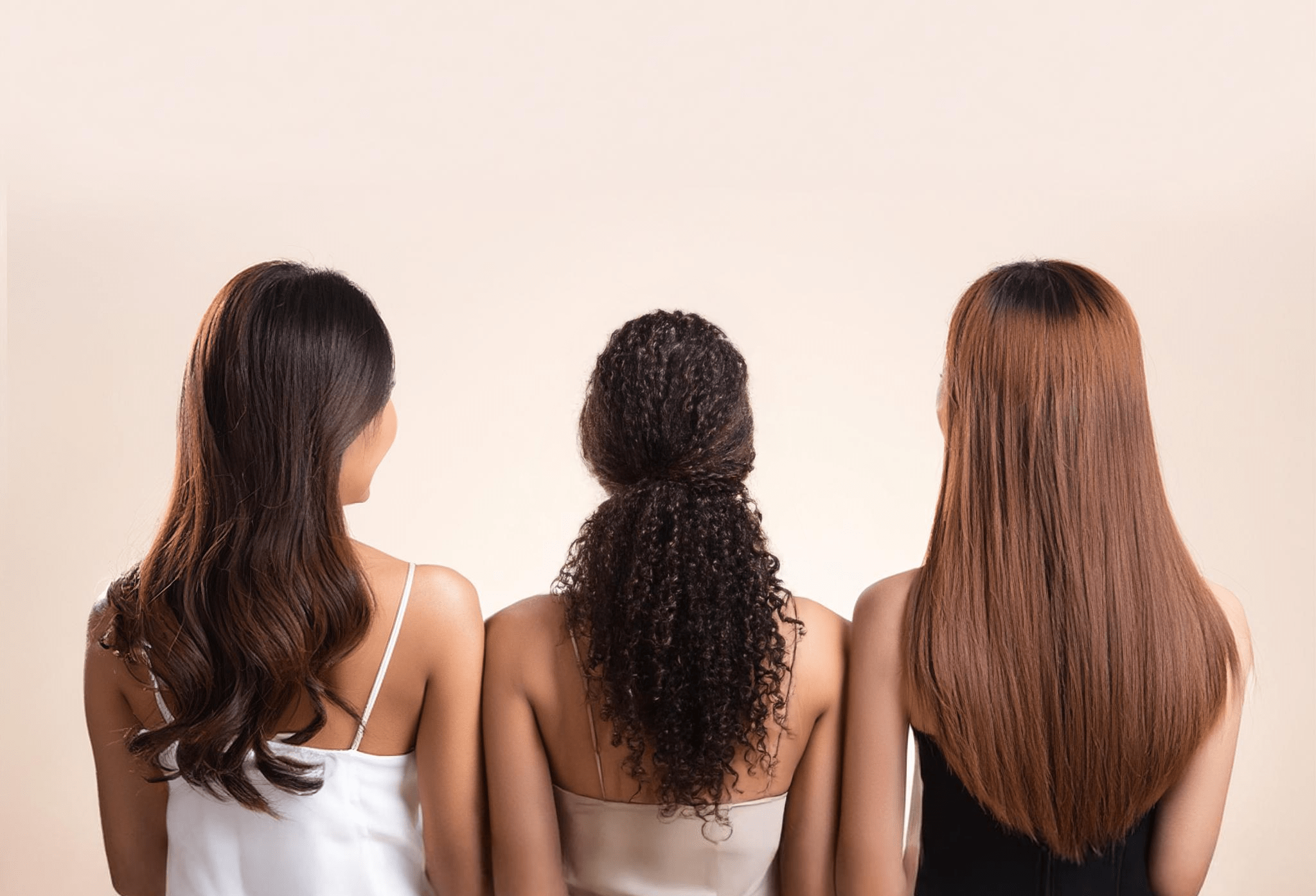
Curly Hair
Curly hair, with its vibrant and dynamic spirals, often carries a personality all its own, requiring a deeper level of care and attention. The curls, though beautiful, can be prone to dryness, as the natural oils struggle to navigate the twists and turns that define this hair type. To keep curls healthy and full of life, it’s crucial to use a gentle, sulphate-free shampoo that respects the hair’s natural moisture barrier. Conditioning curly hair is about deeply nourishing each strand to enhance the curl pattern, reduce frizz, and leave the hair feeling soft, defined, and ready to embrace its natural form.
Kinky Hair
Kinky hair, with its tight coils and textured strands, often stands as a testament to resilience and beauty in its most natural state. This hair type is inherently drier and more fragile, requiring a level of care that goes beyond the surface. The right shampoo for kinky hair is one that cleanses without stripping, allowing the hair to retain its essential oils and maintain its strength. The goal is to nourish each coil, ensuring that the hair remains soft, supple, and full of life.
What Are The Different Types Of Shampoo?
When it comes to shampoo, the variety available can sometimes feel overwhelming, but understanding the different types and what they offer can make all the difference for your hair. Each shampoo type is designed with specific ingredients and goals, catering to different hair needs and concerns. Let’s break down the most common types and explore who can benefit the most from each one.
Moisturising Shampoo
Moisturising shampoos are exactly what they sound like – they’re designed to add and lock in moisture. They are perfect for people with dry, damaged, or curly hair, which tends to lose moisture faster than other hair types. These shampoos usually contain ingredients like oils, shea butter, or glycerin to replenish lost hydration, leaving your hair soft, smooth, and easier to manage. If your hair feels brittle, frizzy, or is prone to breakage, a moisturising shampoo can help restore its health and shine over time.
Clarifying Shampoo
Clarifying shampoos are like a reset button for your hair. Designed to remove buildup from products, oils, and environmental pollutants, they go beyond the surface cleaning that regular shampoos provide. These shampoos are ideal for people who use a lot of styling products, as residue can weigh hair down and make it look dull over time.
Volumising Shampoo
If you have super fine or dull hair, volumising shampoo is your best friend. These shampoos are designed to add lift and body, making hair appear fuller and more voluminous. They achieve this by using lightweight formulas that don’t weigh the hair down, often containing ingredients like proteins or keratin to strengthen the strands and give them more structure.
Colour-Safe Shampoo
Colour-treated hair needs special care, and that’s where colour-safe shampoos come into play. These shampoos are formulated to protect your colour while gently cleansing your hair without stripping away the dye. They often contain fewer harsh detergents, like sulphates, which are known to fade colour faster. If you’ve spent time and money achieving that perfect shade, a colour-safe shampoo will help maintain its vibrancy for longer.
Sulphate-Free Shampoo
Sulphate-free shampoos are becoming increasingly popular, and for good reason. Sulphates, which are common in many shampoos, are what give you that rich, foamy lather, but they can also be harsh on your hair and scalp, especially if you have sensitive skin or dry, fragile hair. Sulphate-free shampoos provide a gentler clean, making them ideal for people with sensitive scalps, curly hair, or those with keratin treatments, as they don’t strip away natural oils or moisture.
Anti-Dandruff Shampoo
For those who struggle with dandruff or a flaky scalp, anti-dandruff shampoos can make a world of difference. These shampoos typically contain active ingredients like zinc pyrithione, salicylic acid, or selenium sulphide, which help reduce the presence of dandruff-causing fungi, soothe irritation, and prevent flakes from forming.
With all of these different types of shampoos available, the key is to choose the one that best aligns with your hair’s specific needs. Whether you’re looking to add moisture, fight frizz, protect your colour, or restore strength, there’s a shampoo out there designed to help you achieve your healthiest hair yet.
Natural or Synthetic Shampoo?
When deciding between natural and synthetic shampoos, it’s important to understand the key differences between the two and how they can impact your hair. Both natural and synthetic shampoos offer unique benefits, but the choice ultimately depends on your hair type, personal preferences, and what you're hoping to achieve in your hair care routine.
Natural shampoos have gained a lot of popularity in recent years, especially as more people become conscious about the ingredients in the products they use on their hair and skin.
One of the biggest advantages of using a natural shampoo is that it’s less likely to cause irritation, especially if you have a sensitive scalp or allergies to synthetic ingredients. Because natural shampoos tend to rely on mild cleansing agents, they’re much less likely to strip your hair of its natural oils, making them a great option for people with dry or damaged hair.
It’s important to note that while natural shampoos are gentler, they might not always give you that rich, lathering effect that many people associate with a deep clean. This is because they typically lack sulphates, which are responsible for producing the foamy texture found in many synthetic shampoos. Whilst some might appreciate this more subtle cleansing, others who are used to a squeaky-clean feel may initially find that natural shampoos leave their hair perhaps feeling a little less clean which can take some getting used to.
However, the downside of synthetic shampoos is that some of their ingredients, particularly sulphates and parabens, have been linked to issues like dryness, irritation, and long-term hair damage. Sulphates, for instance, can be too harsh for certain hair types, especially if your hair is already dry or colour-treated, as they strip away not only dirt but also the natural oils your hair needs to stay healthy.
So, when it comes to choosing between natural or synthetic shampoo, the decision really depends on your individual hair needs and priorities. If you’re someone who values using clean, eco-friendly ingredients and wants a gentle approach to hair care that focuses on long-term hair health, a natural shampoo may be the perfect fit for you.
On the other hand, if you’re after quick results and have specific hair goals in mind—whether that’s more volume, less frizz, or maintaining a fresh hair colour—you might prefer the effectiveness of a synthetic shampoo. These shampoos can give you the immediate results you’re looking for, especially if you don’t have any sensitivities to the ingredients used.
How to Choose the Right Conditioner
When it comes to choosing the right conditioner, it’s just as important as selecting the perfect shampoo. A good conditioner not only nourishes and hydrates your hair but also helps protect it from environmental damage, heat styling, and the wear and tear of daily life. However, not all conditioners are created equal, and selecting the one that’s right for your hair type is key to achieving healthy, manageable locks.
For Fine or Flat Hair
If you have fine or flat hair, you’ll want a conditioner that hydrates without weighing your hair down. Volumising conditioners are your best bet, as they are designed to add lift and body without leaving a heavy residue. Look for lightweight formulas that contain proteins or ingredients like keratin, which can strengthen your hair and provide a bit of bounce without the flatness.
For Dry or Damaged Hair
Dry and damaged hair requires extra love and attention, and that’s where deeply nourishing conditioners come in. If your hair feels brittle, frizzy, or has been damaged by heat styling or chemical treatments, look for a conditioner rich in moisture-boosting ingredients like shea butter, coconut oil, or argan oil. Hydrating conditioners will help restore moisture to your strands and prevent further damage, leaving your hair feeling soft and smooth.
For Oily Hair
For those with oily hair, finding the right conditioner can feel tricky. You might be tempted to skip conditioner altogether, but that can actually cause more harm than good. Instead, opt for a lightweight, balancing conditioner that helps maintain moisture without contributing to the oiliness. Look for oil-control or clarifying conditioners that focus on balancing the scalp’s natural oil production while keeping your hair hydrated.
For Curly or Coarse Hair
Curly and coarse hair types tend to be on the drier side, so you’ll need a conditioner that offers intense hydration and defines your curls without causing frizz. Look for conditioners specifically designed for curly hair, often labelled as "curl-enhancing" or "moisture-rich." These formulas typically contain ingredients like jojoba oil, avocado oil, or aloe vera, which help smooth the hair cuticle and lock in moisture, keeping curls defined and frizz at bay.
For Colour-Treated Hair
If you’ve dyed your hair, it’s essential to choose a conditioner that’s formulated to protect and extend the life of your colour. Colour-treated hair tends to be more fragile and prone to dryness, so a conditioner that adds moisture while protecting your colour from fading is key. Look for products that are labelled as "colour-safe" or "for coloured hair." These conditioners often contain UV filters and antioxidants that protect your hair from the sun and environmental damage, which can cause your colour to fade faster.
For Thick Hair
Thick hair often needs extra moisture to keep it manageable and prevent frizz. You’ll want to look for conditioners that are deeply hydrating, rich in emollients like shea butter, coconut oil, or argan oil. These ingredients help smooth and soften thick hair, making it easier to detangle and style.
For Combination Hair (Oily Roots, Dry Ends)
If you have combination hair, where your roots get oily but your ends remain dry, finding the right conditioner can be a balancing act. You’ll want a conditioner that hydrates your dry ends without adding too much moisture to your already oily scalp. A balancing conditioner is a great choice for this type of hair, as it helps maintain moisture levels throughout your hair without overloading it with heavy ingredients.
What Are The Different Types Of Conditioner?
When it comes to choosing the right conditioner for your hair, it's important to recognise that conditioners come in various forms, each serving a different purpose and offering distinct benefits depending on your hair's needs. Understanding these different types can help you make a more informed decision that leads to healthier, more manageable hair. Let’s explore the most common types of conditioners and who they are best suited for.
Rinse-Out Conditioner
The most familiar type of conditioner is the rinse-out variety, which is likely what most people are used to incorporating into their daily hair care routines. These conditioners are applied to freshly washed, damp hair and rinsed out after a few minutes. Their primary purpose is to provide hydration, detangle hair, and leave it feeling softer and more manageable. This type of conditioner is suitable for all hair types, but there are formulas tailored to address specific needs, such as moisture for dry hair, volume for fine hair, or colour protection for treated hair.
Leave-In Conditioner
Unlike rinse-out conditioners, leave-in conditioners are designed to stay in your hair after application. These conditioners are typically applied to damp hair after a shower and left in to provide continuous moisture throughout the day. Leave-in conditioners are particularly beneficial for people with dry, curly, or damaged hair that needs extra hydration or help with detangling. Because they are left in, they offer long-lasting moisture, helping to soften the hair, reduce breakage, and enhance shine.
Deep Conditioner or Hair Mask
Deep conditioners, also known as hair masks, offer a more intensive treatment designed to deeply nourish and repair the hair. These conditioners are typically thicker and heavier than everyday rinse-out conditioners, and they are meant to be left on the hair for an extended period, often around 10 to 20 minutes, to allow the rich, moisturising ingredients to penetrate the hair shaft.
Protein Conditioner
Protein conditioners are specifically formulated to strengthen and repair damaged hair by restoring lost protein in the hair’s structure. Hair is primarily made up of a protein called keratin, and when it undergoes damage—whether from chemical treatments, excessive heat, or environmental factors—the protein in your hair can become weakened or depleted. Protein conditioners help to rebuild and fortify your hair by depositing proteins such as keratin, collagen, or silk protein into the hair shaft, improving its elasticity and strength.
Moisturising Conditioner
Moisturising conditioners, as the name suggests, are focused on hydrating the hair, making them a perfect choice for those dealing with dry or dehydrated locks. These conditioners are packed with ingredients like natural oils, glycerin, and humectants, which help draw moisture into the hair and lock it in, ensuring that your strands stay soft, smooth, and shiny.
Smoothing or Anti-Frizz Conditioner
If you often struggle with frizz or flyaways, especially in humid conditions, a smoothing or anti-frizz conditioner can be your best ally. These conditioners are designed to coat the hair strands and seal the cuticle, making the hair smoother and less prone to frizz caused by moisture in the air. Typically infused with ingredients like silicones, argan oil, or shea butter, these conditioners work to tame unruly hair and leave it feeling sleek and polished.
Colour-Protecting Conditioner
If you’ve invested time and effort in colouring your hair, a colour-protecting conditioner is essential for maintaining the vibrancy and longevity of your hue. These conditioners are formulated with ingredients that help lock in colour, prevent fading, and protect the hair from the damaging effects of UV rays and environmental pollutants, both of which can dull your colour over time.
Balancing Conditioner
A balancing conditioner is designed to cater to people with combination hair—those who experience oily roots but dry ends. This type of conditioner works by providing moisture where it's needed, particularly to the mid-lengths and ends, without adding extra oil or weight to the scalp. Balancing conditioners often contain lightweight hydrating ingredients, ensuring that the hair stays nourished and manageable without becoming greasy or limp at the roots.
In summary, choosing the right conditioner is all about understanding your hair’s needs and finding a formula that works in harmony with them. Whether you need deep nourishment, a lightweight touch, or protection for your colour, the right conditioner can make all the difference in how your hair feels and behaves day to day.
Natural Or Synthetic Conditioner?
When it comes to choosing a conditioner for your hair, you might wonder whether to go with natural or synthetic options. Both have their benefits, depending on what you're looking for. Natural conditioners are made from plant-based or organic ingredients, free from harsh chemicals. They tend to be gentler on the hair and scalp, especially for those with sensitive skin or allergies. On the other hand, synthetic conditioners often contain lab-created ingredients designed to deliver specific results, like smoothing, detangling, or protecting from heat damage.
So, which is better? It depends on your hair type and what you want out of your conditioner.
Why Are Natural Conditioners Good?
One of the biggest advantages of natural conditioners is that they tend to be formulated with ingredients derived from plants, essential oils, and other naturally sourced compounds. This makes them a more eco-friendly choice, appealing to those who are concerned about the environment or want to avoid harsh chemicals. Natural conditioners often exclude synthetic additives such as parabens, sulphates, silicones, and artificial fragrances, making them a great option for people with sensitive scalps or those prone to allergic reactions.
Because natural conditioners are free from many of the synthetic chemicals that can strip hair of its natural oils, they are often gentler on the hair and scalp. Many natural ingredients, such as aloe vera, coconut oil, and shea butter, provide excellent hydration without the need for synthetic compounds. In addition, natural conditioners are often cruelty-free, with many brands being vegan or not tested on animals, which can be a deciding factor for ethically minded consumers.
What Are The Downsides Of Natural Conditioners?
Whilst natural conditioners have many benefits, they do come with some potential drawbacks. For one, because they rely on natural ingredients, they may not be as effective for specific hair issues, such as intense frizz control or colour protection, compared to synthetic options. They may also take longer to show noticeable results, especially if your hair is very dry, damaged, or chemically treated.
Natural conditioners can sometimes have a shorter shelf life due to the lack of preservatives, meaning they may spoil faster than synthetic products. Additionally, these conditioners might not have the same rich, luxurious texture or the pleasant, long-lasting scent often associated with synthetic products, as natural fragrances are typically more subtle.
Another consideration is cost. Because natural conditioners often contain high-quality, organic ingredients, they can be more expensive than their synthetic counterparts, which might not always fit into everyone’s budget.
Choosing between natural and synthetic conditioners depends on what you value most in your hair care routine. If you prioritise gentle, eco-friendly products that nourish hair over time and want to avoid harsh chemicals, a natural conditioner may be the best choice for you. However, if you're looking for fast, targeted results to address specific hair issues or want a more affordable and widely available option, a synthetic conditioner might better suit your needs. Ultimately, it’s about finding the balance between effectiveness, ingredient preferences, and how your hair responds over the long term.
Why Is It Important To Match Shampoo and Conditioner
Matching your shampoo and conditioner is more than just a routine step in your hair care regime—it’s a crucial aspect of ensuring your hair stays healthy, vibrant, and manageable. Whilst it might seem convenient to mix and match different brands or types of products, using a shampoo and conditioner designed to work together can make a significant difference in the overall condition and appearance of your hair.
When you use a matching shampoo and conditioner, you’re essentially giving your hair a consistent and complementary treatment from start to finish. Shampoos are formulated primarily to cleanse your hair and scalp, removing dirt, oil, and product buildup. Depending on your hair type and the specific shampoo you choose, this cleansing process can range from gentle to deep-cleaning. However, even the most gentle shampoos can strip away some of the natural oils that keep your hair healthy and hydrated. This is where a matching conditioner comes in—it’s designed to restore the moisture balance that the shampoo may have disturbed, smoothing the hair cuticle and replenishing essential nutrients that might have been lost during the washing process.
When shampoo and conditioner are formulated together, they’re designed to address your hair’s needs in a balanced way, with each product enhancing the effects of the other. For instance, if you have dry hair and use a moisturising shampoo, the matching conditioner will likely contain ingredients that further lock in moisture, ensuring your hair stays hydrated and soft.
On the other hand, mixing different brands or formulas can sometimes lead to less-than-ideal results. A shampoo from one brand might leave a residue that another brand’s conditioner isn’t designed to remove, leading to build-up or a weighed-down feeling. Alternatively, a conditioner might be too heavy or too light for the cleansing effects of a shampoo it wasn’t formulated to pair with, resulting in either oily roots or dry, brittle ends. These mismatches can leave your hair looking and feeling out of balance, making it more challenging to achieve the smooth, shiny, and manageable hair you’re aiming for.
By using a matching shampoo and conditioner, you ensure that your hair receives a consistent, balanced treatment that addresses its specific needs from start to finish.
Our Tips For Maintaining Healthy Hair
Maintaining healthy hair is a journey that goes beyond just choosing the right shampoo and conditioner; it involves adopting a holistic approach to hair care that includes proper habits, nourishing treatments, and a bit of self-love. Your hair is a reflection of your overall health, and by taking care of it with intention and care, you can ensure it remains vibrant, strong, and beautiful. Here are some tips for keeping your hair in its best possible condition.
One of the most important aspects of maintaining healthy hair is consistency in your hair care routine. Regular washing with a shampoo and conditioner that suits your hair type is crucial, but it’s equally important not to overdo it. Washing your hair too frequently can strip it of its natural oils, leaving it dry and prone to damage. Depending on your hair type and lifestyle, finding the right balance—whether that’s washing every day, every other day, or a few times a week—can make a big difference in keeping your hair well-nourished and hydrated.
In addition to washing, protecting your hair from heat is essential for maintaining its health. Heat styling tools like hair dryers, straighteners, and curling tongs can cause significant damage to your hair if used excessively or without protection. Whenever possible, let your hair air dry, and when you do use heat styling tools, make sure to apply a heat protectant spray beforehand. This creates a barrier between your hair and the high temperatures, reducing the risk of damage and keeping your hair smooth and shiny.
Another key factor in maintaining healthy hair is regular trimming. Whilst it might seem counterintuitive if you’re trying to grow your hair out, getting regular trims—every six to eight weeks—helps prevent split ends from travelling up the hair shaft, which can lead to more significant damage over time. By trimming the ends of your hair regularly, you keep it looking fresh, reduce breakage, and promote healthier growth.
Diet also plays a crucial role in the health of your hair. Just as your body needs a balanced diet to function optimally, your hair thrives when it’s nourished from the inside out. Incorporating a variety of vitamins and nutrients, particularly those rich in biotin, vitamins A and E, iron, and omega-3 fatty acids, can help support hair growth and strength.
Lastly, being gentle with your hair is vital. Avoid aggressive brushing, especially when your hair is wet and more vulnerable to breakage. Use a detangling brush to gently work through knots and tangles, starting from the ends and working your way up to the roots. This method reduces the risk of pulling and breaking your hair.
By adding these simple yet effective practices into your routine, you can maintain the health and beauty of your hair. It’s not just about the products you use, but also the care and attention you give your hair every day.



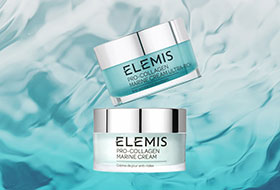


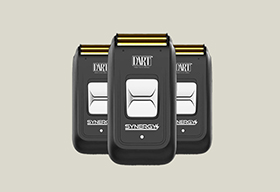
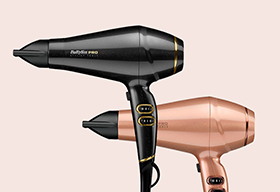
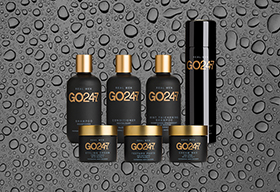
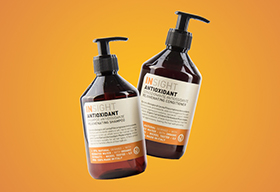
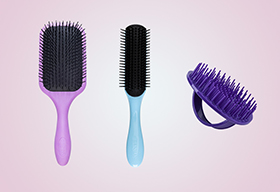
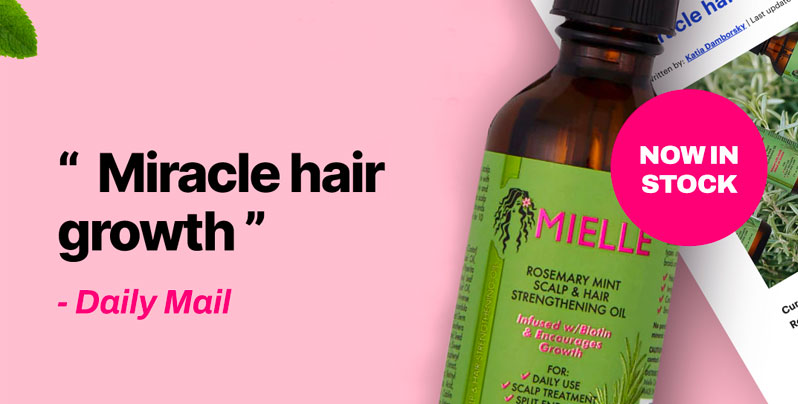






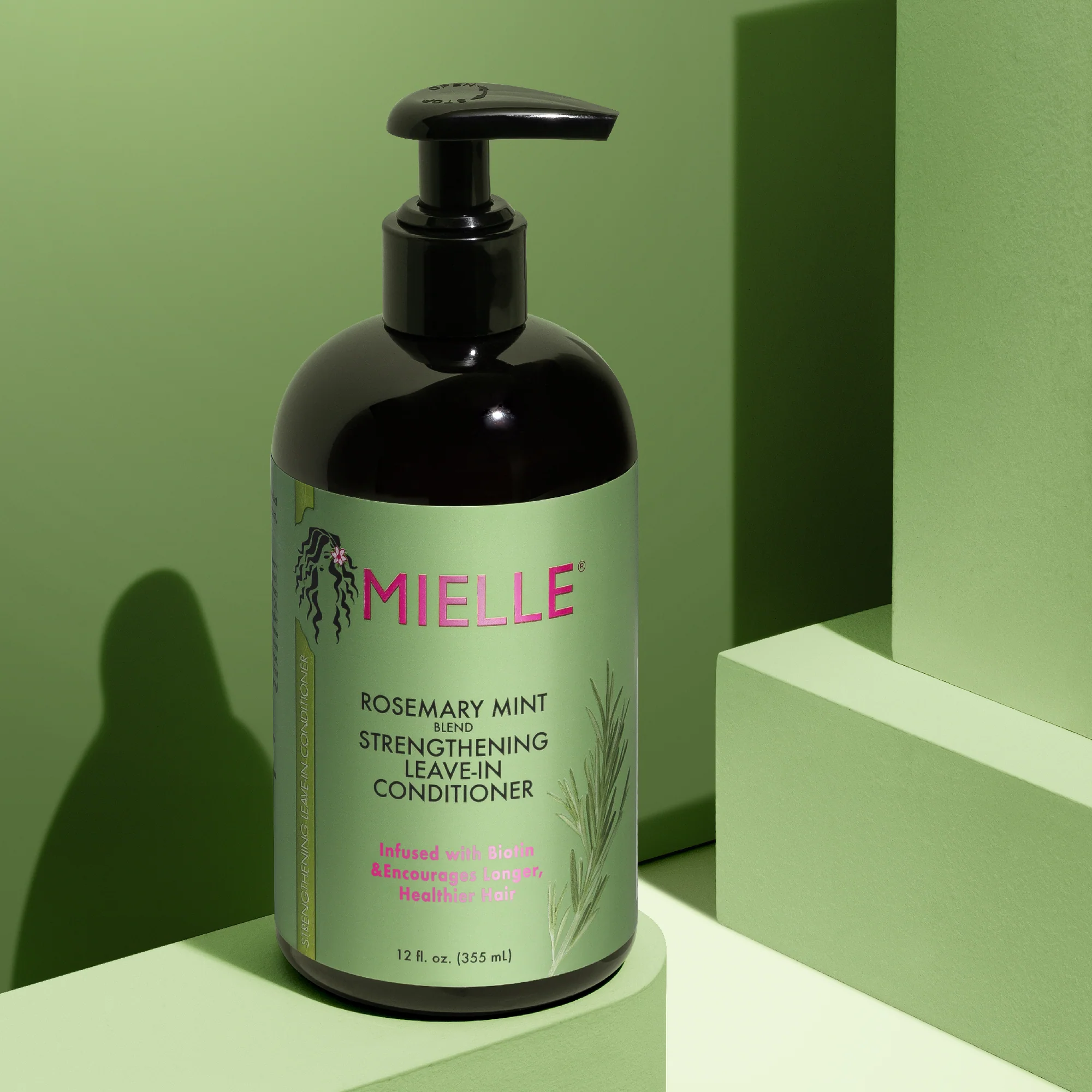
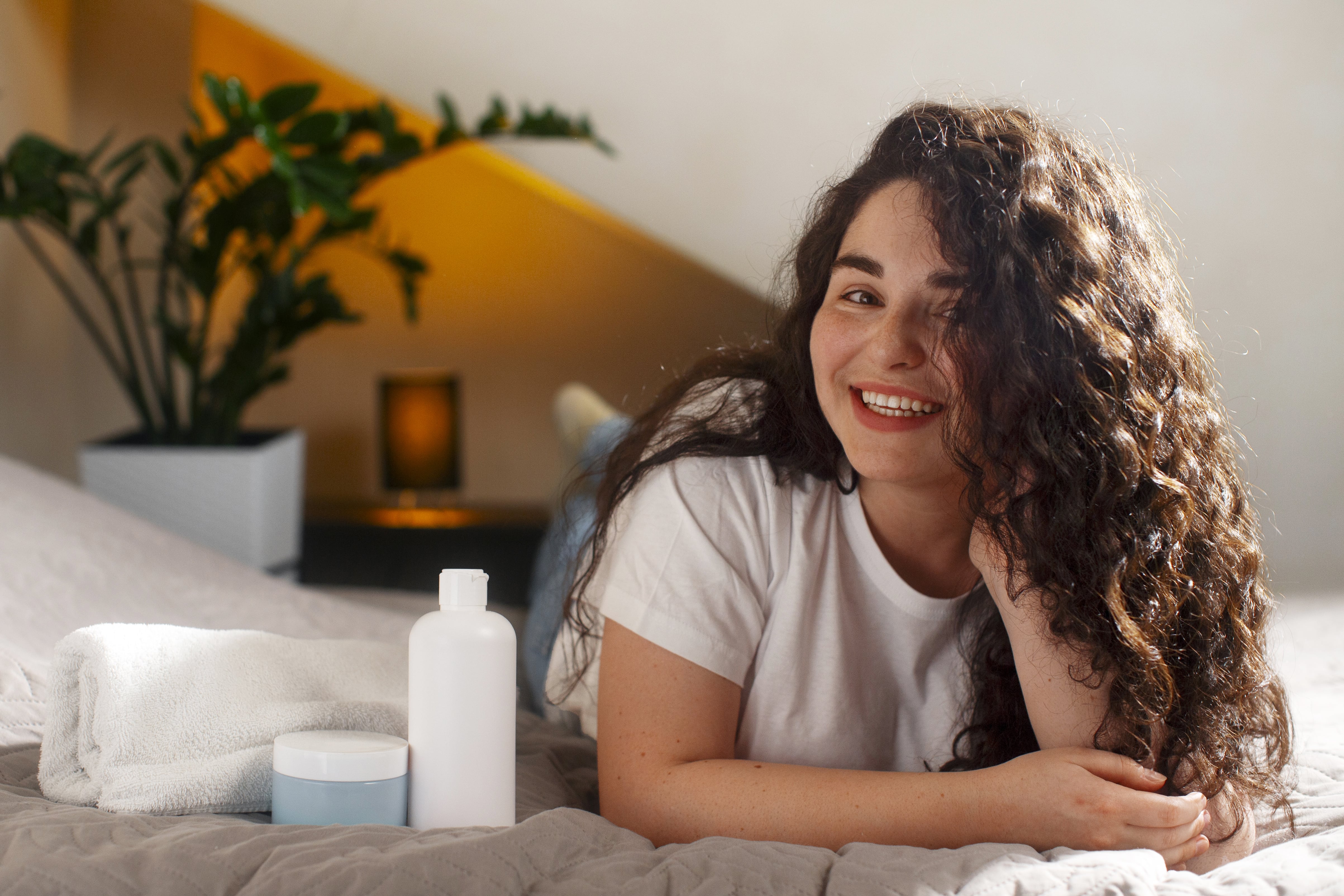

Comments (0)